I don’t know where I first had the classic cheese-stuffed bread that is Focaccia di Recco, but I know it wasn’t where the recipe originated in Recco, Italy (or the nearby Camogli).
What I do know is that it was love at first bite. The idea of sandwiching cheese in focaccia was mind-blowing, and it only got better when I tried its variations like topped with curls of prosciutto or pesto, as I’ve done here.
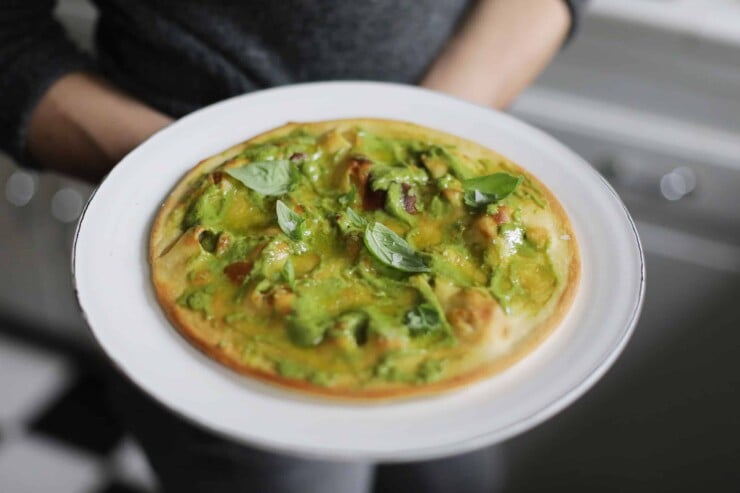
Where Is Recco?
But let’s back up a bit. To situate you, let’s start with geography. Recco is a seaside town on the Italian Riviera (home to some of my all-time favorite seaside towns!), and though it’s a short jaunt from Genoa, the focaccia that comes from these two Italian Riviera towns couldn’t be more different.
What Is Focaccia Di Recco?
Genoa is known for the classic Focaccia Genovese that’s light and airy, about 1 inch high, dimpled, and doused in olive oil and flaky sea salt. Focaccia di Recco is an entirely different thing. The focaccia from Recco is unleavened (yup, no yeast!) and made by sandwiching melty cheese between an olive oil dough.
The story goes that around the time of the third crusades (about 1100 AD for reference), there were pirates and attacks along the coast stretching from Genoa south, and the people of the town of Recco were down to their last few ingredients. They ended up making this unleavened focaccia, and fast-forward almost 1,000 years (!), and it’s the classic recipe for which the town is best known!
This focaccia is made with cheese, and the classic cheese to use is crescenza or stracchino. These can be hard to find in the United States, so you can use mozzarella in a pinch. However, it’s worth hunting down the classic cheeses at least once because the result is delicious!
Our Variation On Focaccia Di Recco
I up the ante by topping it with pesto! Okay, I didn’t come up with this, but I was served it at one of the restaurants I visited last time I was in Genoa, and it was delicious. I use the Classic Creamy Pesto recipe I’m known for to make it, but you could use any quality pesto you want.
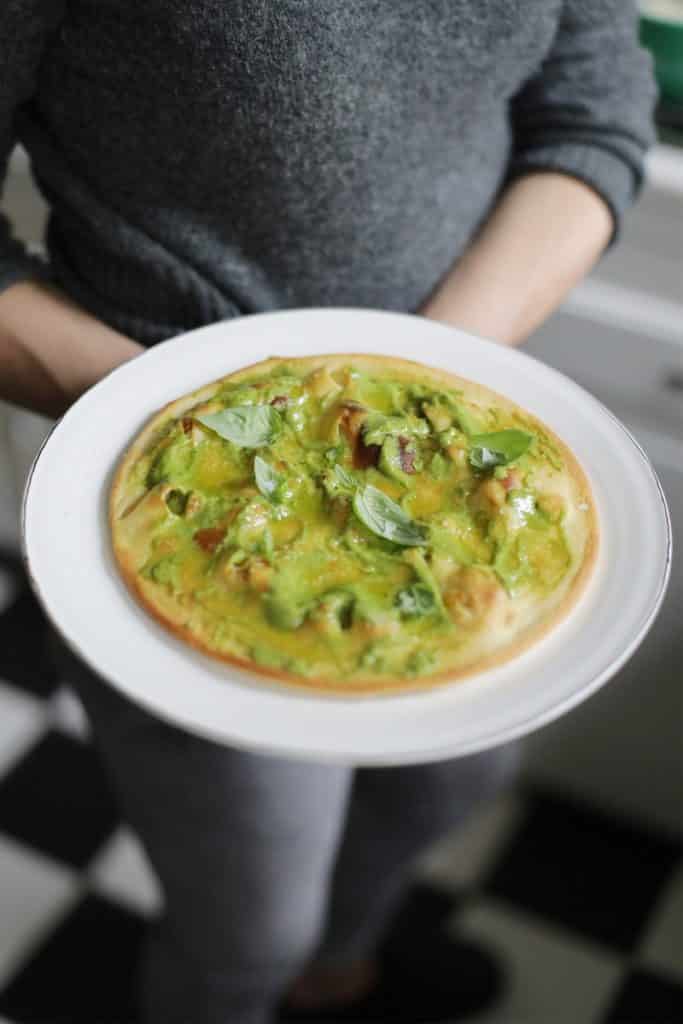
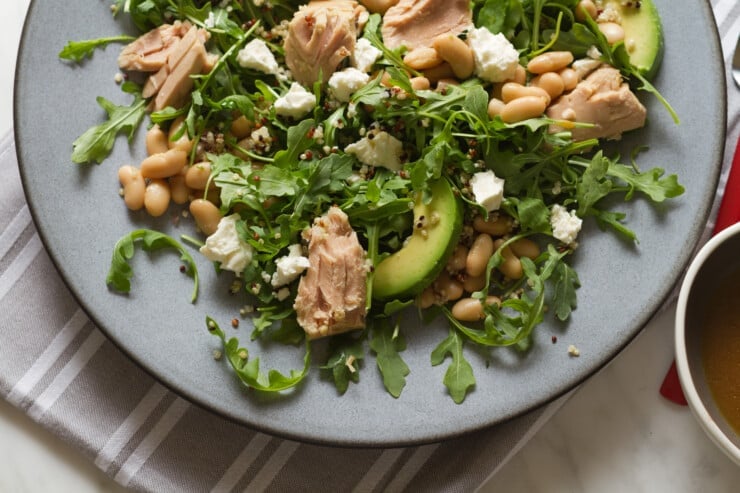
Recipes To Serve With Focaccia Di Recco
This focaccia would be a good starter or side dish along with this tuna salad, our green minestrone, or a roast chicken. But if you make the Focaccia Di Recco with the pesto, I recommend serving it with a simple salad and a glass of great white wine (like a Vermentino from Liguria!).
Now go stock up on all your cooking essentials, head into the kitchen, make this, and share it with us by tagging @saltandwind and #swsociety on social!
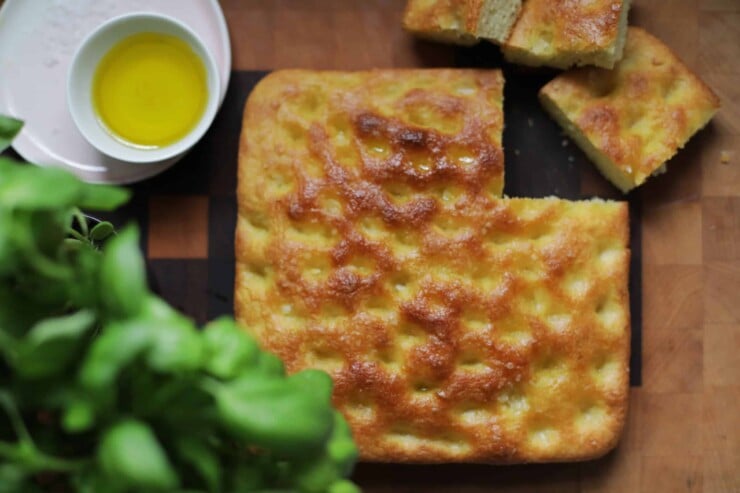
Classic Ligurian Recipes
Want to cook up some flavors of Liguria? Here are a few of our readers’ favorite classic Italian recipes:

Liguria Travel Guide
Are you considering traveling to Genoa and the Liguria region in real life? Check out our free Liguria Travel Guide for our best travel tips, recipes, and articles on Italy.
Get A Personalized Travel Itinerary
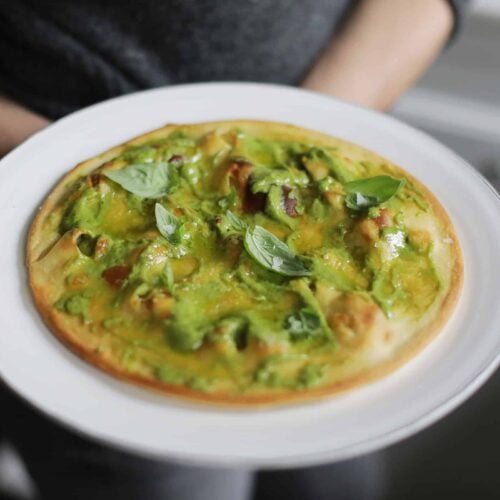
{Focaccia Di Recco} Thin Crust Cheese-Stuffed Focaccia Recipe
Equipment
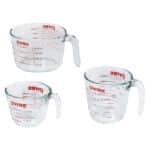
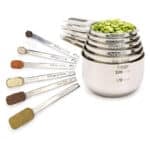
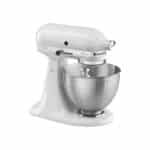
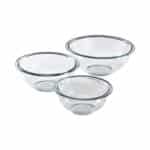
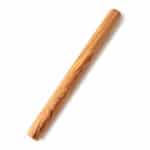
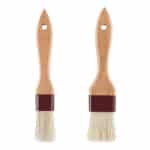
Ingredients
For The Focaccia Dough:
- 1 cup plus 2 tablespoons warm water
- 1/3 cup extra-virgin olive oil plus more for finishing the focaccia
- 1 tablespoon kosher salt
- 1 pound (about 3 1/2 cups) all-purpose or bread flour or semolina flour, plus more for rolling the dough
For The Garnish:
- 8 ounces ciliegine (or one large piece) buffalo mozzarella or, if you can find it, crescenza or stracchino cheese
- 1 cup pesto
- Maldon sea salt or other flaky sea salt, for garnish
- Fresh basil leaves for garnish, optional
Instructions
- Make The Focaccia Dough: Combine the water, olive oil, and salt in the bowl of a stand mixer fitted with a dough hook. Turn the mixer on low speed, add the pouring shield if you have it (otherwise, turn the mixer on and off as needed, so you don't have flour fly everywhere), and add the flour to the mixer a spoonful at a time.Once all the flour is incorporated, turn the mixer to medium speed and mix until the dough is smooth, elastic, and does not stick to the sides of the bowl, about 5 to 8 minutes. Remove the dough to a very lightly floured work surface and bring it together in a ball. Divide the dough into two pieces (each piece will make one focaccia) and place each in a resealable storage container or a bowl covered with a damp towel or plastic wrap. Let rest for 30 minutes at room temperature before continuing.
- Shape The Focaccia Dough: Once the dough has rested, prepare the bottom piece of a 9-inch springform pan by brushing it with extra virgin olive oil. Heat the oven to 500°F, arrange a rack in the middle, and place a baking stone, pizza stone, or two nested baking sheets on the rack (these will help make the bottom crust nice and golden brown!). Place one of the dough pieces onto a very lightly floured clean countertop and divide it in two. Take one of the pieces of dough, and, using flour sparingly, roll the dough into an 11-inch circle.Drape the piece of dough over the prepared pan. Pinch the cheese and tear it into bite-sized pieces, then scatter the cheese across the dough (you don't need the whole bottom covered with cheese, and sprinkling it a bit haphazardly makes for focaccia with different parts that have more cheese!). Roll the second piece of dough into an 11-inch circle and drape it on top of the cheese-covered piece of dough so that you have two layers of dough. Don't pull the top piece of dough taut, but rather let it be loose enough that it can drape a bit between the bits of cheese (it shouldn't fold over on itself, though).Use scissors or a sharp knife to snip or cut slits (about 1-inch in length) above each piece of cheese to allow steam to escape, then gently press down on the dough to remove any air and have it deflate and seal the edge.
- Bake The Focaccia Bread: Brush the top of the dough with olive oil and add a large pinch of flaky salt. Place the focaccia in the oven on the baking stone or baking sheets, reduce the oven temperature to 475°F, and bake 15 minutes, turning halfway through baking, until the cheese is bubbling, golden, and has a few browned bits.
- Finish The Focaccia Bread: Remove the focaccia from the oven and immediately transfer it to a serving platter. Top it with a few spoonfuls of the pesto and spread it all over the top. Drizzle a bit more olive oil on top, add a pinch of flaky salt and a few fresh basil leaves (if using). Serve immediately!